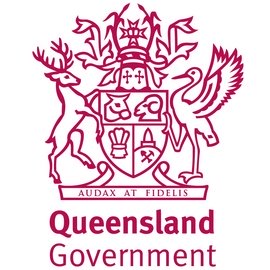And more funding is not necessarily the answer either, the senior lecturer from Griffith University contends.
Attention, hyperactivity and/or impulsivity problems
Roughly eight per cent of students in the average Australian classroom now have ADHD, and while the precise cause is unknown, it’s understood to be a neurodevelopmental disorder that can manifest as problems with attention, hyperactivity and impulsivity, or all three.
It also places children more at risk of school refusal, a growing trend across the country.
Gibbs tells EducationHQ that poor academic progress is all too often the outcome for students with ADHD, as teachers contend with a whole range of unwanted behaviours that children themselves find difficult to control.
“We’re talking about the behaviours that associate with either being inattentive in class, being hyperactive, and impulsive in class where you’re fidgeting, you can’t concentrate, you’re calling out, or a combination of all three…” Gibbs says, noting it is hard to make behavioural generalisations here.
With diagnoses amongst children reportedly on the rise, teachers are calling for more resources – but the researcher says it’s not clear what these might be.
“When they talk about resources, my understanding from … teachers [is that it’s] about funding.
“But money doesn’t buy everything, a teacher aid in a classroom is not necessarily going to be the answer to a student who is experiencing difficulty managing their own behaviour in the classroom…” Gibbs says.
Teachers as support workers
One thing that is obvious is that the profession wants and needs more training in how to identify the disorder in the first place, she adds.
“I’ve looked at data from 1024 Australian teachers, and (that’s) one of the things that they highlighted they really would like to know more about … because a lot of students mask their behaviours as well.
“If they could identify it, they would then be able to put the initial steps in place in regard to speaking to parents, and advising on ways forward for their children…” Gibbs says.
The classroom climate is said to be more complex than ever before, with record numbers of children presenting with social or emotional disabilities, as well as learning disorders and an array of mental health issues.
Teachers report being overwhelmed as they strive to meet expectations around developing behaviour support and personalised learning plans for students, and spend more time liasing with school wellbeing officers and parents, while also documenting the learning adjustments they make along the way.
Some teachers have said their work now encompasses that of education support workers.
Public schools are particularly stretched, commentators warn, with some taking to the r/AustralianTeachers Reddit discussion board to highlight their take on the situation.
“Private schools have designated positions for teachers to apply for funding for disability, government grants and any other money they can get a hold of,” one teacher posted recently.
“Teacher positions, solely for acquiring more money. Parents of private school kids can also afford to send their children to specialists to diagnose disability as well.
“I teach a bottom Year 9 class where almost everyone has either ADHD or is on the spectrum to some point. 25 kids, no funding. Parents can’t afford to get a diagnosis so that is our first road block. When there is a diagnosis, there isn’t anyone with the time to jump [through] the hoops that are required to receive funding.”

In the expert’s view, the rate of ADHD diagnoses amongst children has now slowed.
A role for humour?
Gibbs was the head of learning support at a large independent boys schools in Brisbane when she abruptly realised she had no clue how ADHD students could be best supported in the classroom.
“A new graduate teacher asked me to come into his classroom, he had three boys with ADHD, their behaviours were very different to one another, and he asked me – as the head of learning support – what I could do to help him to assist those boys academically, socially and emotionally,” Gibbs recalls.
“I observed those three boys, and walked out of that classroom and had no idea how to help them whatsoever.”
Intent on filling in the blanks, Gibbs launched into an educational doctorate unpacking the schooling experience of six adolescent boys diagnosed with ADHD.
This, and her subsequent research in the area, has shed some light on the instructional approaches and classroom management strategies that set students with ADHD up for their best chance of success.
But Gibbs says differentiated instruction, high impact teaching, and a predictable classroom ruled by consistent routines works for all students and not just those with the condition.
“All students like a firm teacher, they like a teacher who knows their content, and has a good knowledge and understanding of what they’re teaching,” Gibbs adds.
“They like a teacher who shows humour in the classroom. They like a teacher who knows them individually, and tries to personalise learning for the students.
“They certainly like structure, they certainly like routines, and they certainly like a teacher who’s very firm, and has classroom rules that everybody uses, but above all, a respectful classroom where all students feel safe…”
The use of teacher humour as a tool to sharpen ADHD students’ focus emerged as a ‘unique’ finding in Gibbs’ doctoral research.
“It enhances the learning opportunities for students. So, I’m a big advocate for using humour,” she says.
And in the expert’s view, the prevalence of ADHD diagnoses amongst children has now slowed.
“What we’re seeing a larger diagnosis of in the last two years is adult women, so that’s an interesting space in itself [and] I’ve just started to expand my research into that area,” she says.
“But our latest statistics from 2020 … say somewhere around 8.2 per cent (of children) overall, for boys it’s slightly higher – 11 per cent.
"And I don’t think those stats since they were published in 2020, have really escalated that much.
“I think ADHD goes through troughs and rises, where it grabs media attention for a couple of weeks, and then you hear nothing for a while and then it circulates.
“That’s my perception, anyway.”














